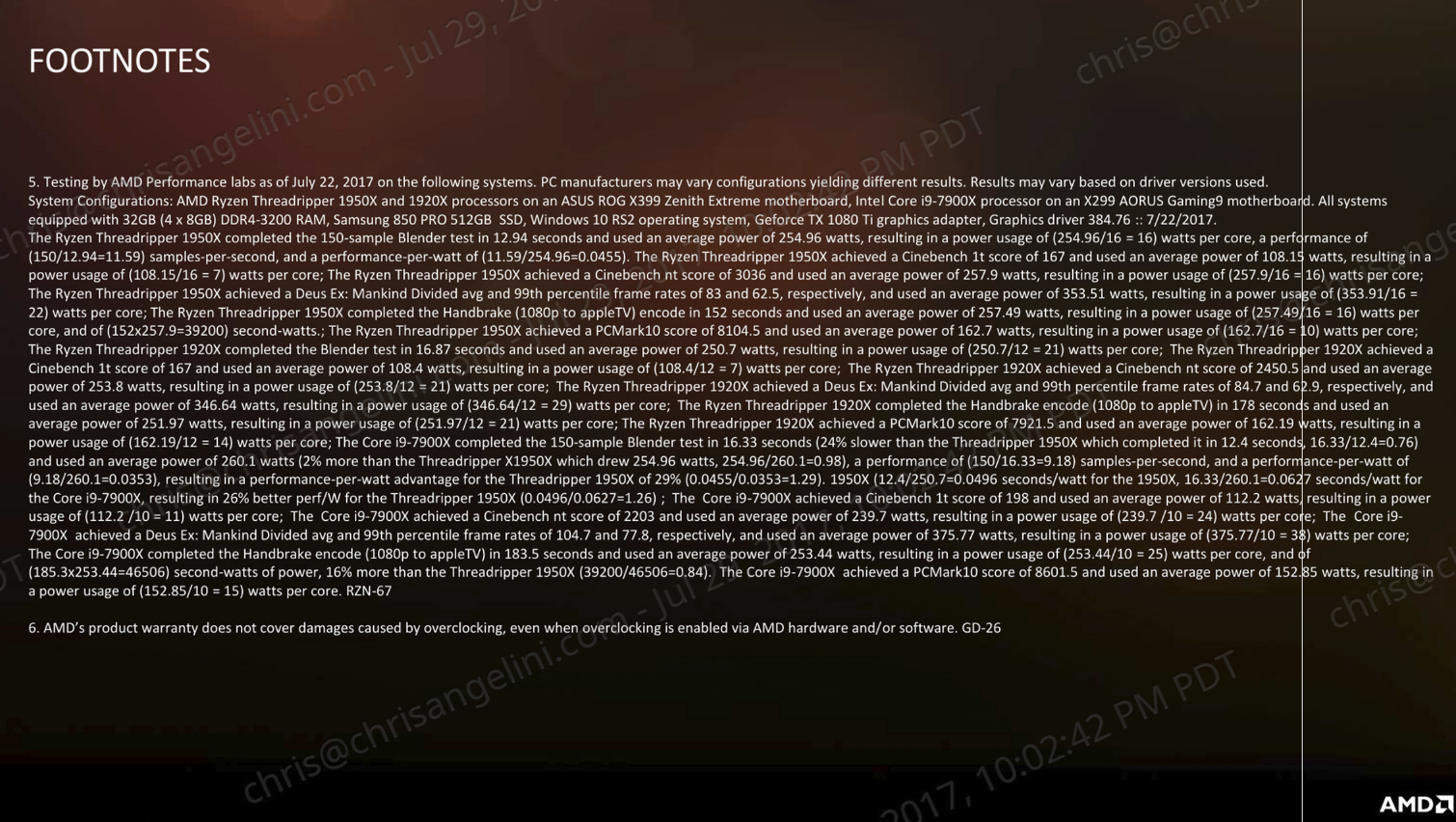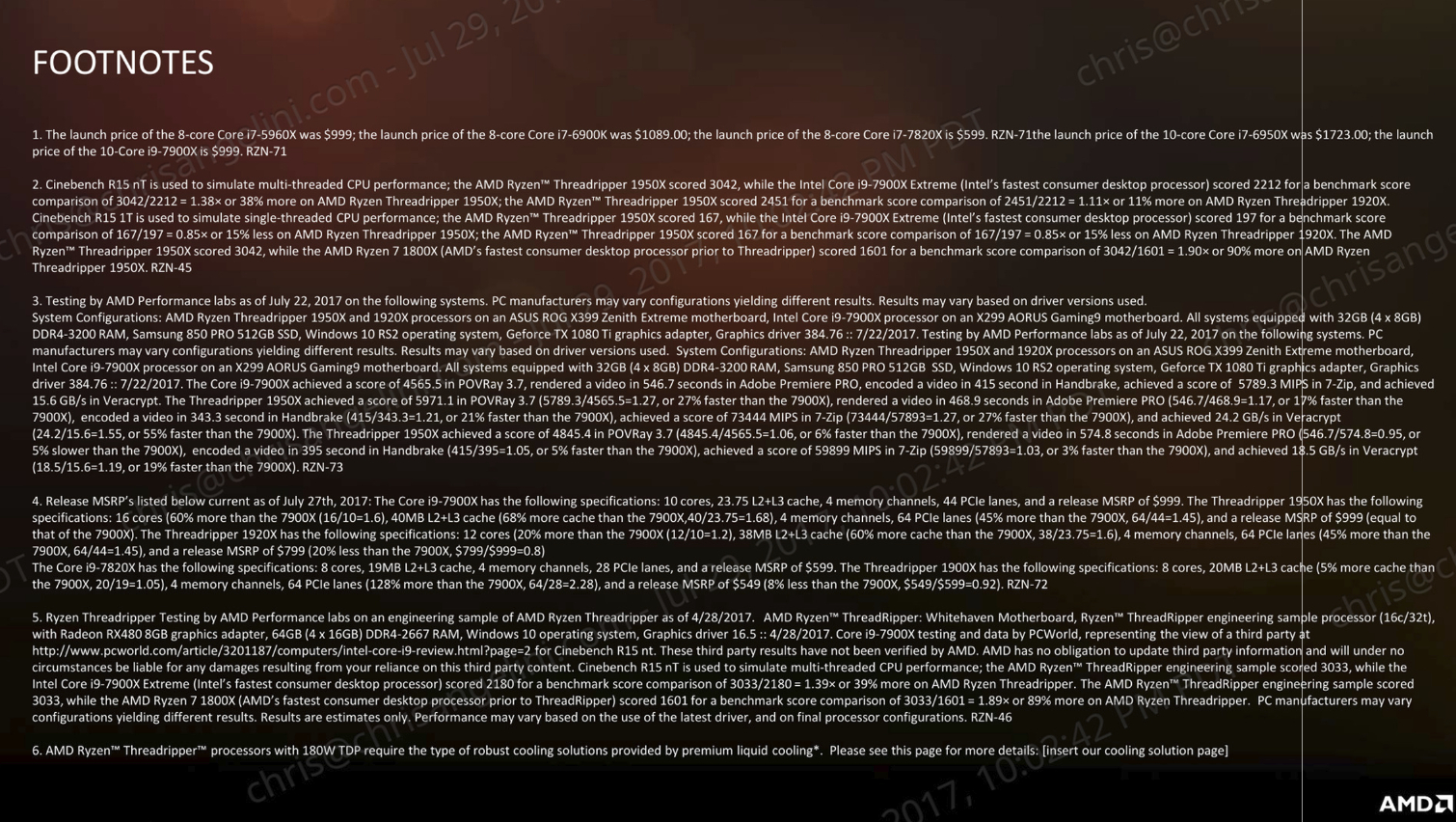Threadripper Lands August 10, AMD Unveils Pricing, Accessory Kit, New 8-Core Model
Threadripper lands on retail shelves on August 10 and pre-orders open tomorrow. AMD filled us in on additional details at its Capsaicin event here in Los Angeles today, including an unannounced processor, a new accessory kit, and Threadripper's XFR frequencies and TDPs.
AMD's Zen microarchitecture, which was first officially available in early March, has truly revitalized the company's processor lineup. The design can scale from low-power mobile models to the high-powered data center, so it was only a matter of time before AMD expanded its attack into Intel's high end desktop stronghold.
AMD's halo Ryzen Threadripper 1950X model leads the charge with 16 cores and 32 threads, and the Zen architecture bristles with copious PCIe connectivity options for the entire lineup. More importantly, Threadripper sets the stage for a potentially lopsided fight between this $999 16-core flagship model and the similarly priced Intel 10-core i9-7900X.
Lower prices and less segmentation are music to enthusiast ears, but we still have a lot of ground to explore when it comes to performance. Here's what we know now.
The Lineup
AMD aims the Threadripper lineup at software developers, video/audio engineers, and of course gamers, particularly those who stream or multitask heavily. The competitive Ryzen 7 lineup addressed the lower spectrum of professional applications, but dual-channel memory limited its reach. Threadripper's step up to a quad-channel memory controller provides enough memory heft to handle voluminous professional applications. Throwing in a beefy slab of PCIe connectivity also provides plenty of NVMe storage ports and supports up to four GPUs for heterogeneous computing.

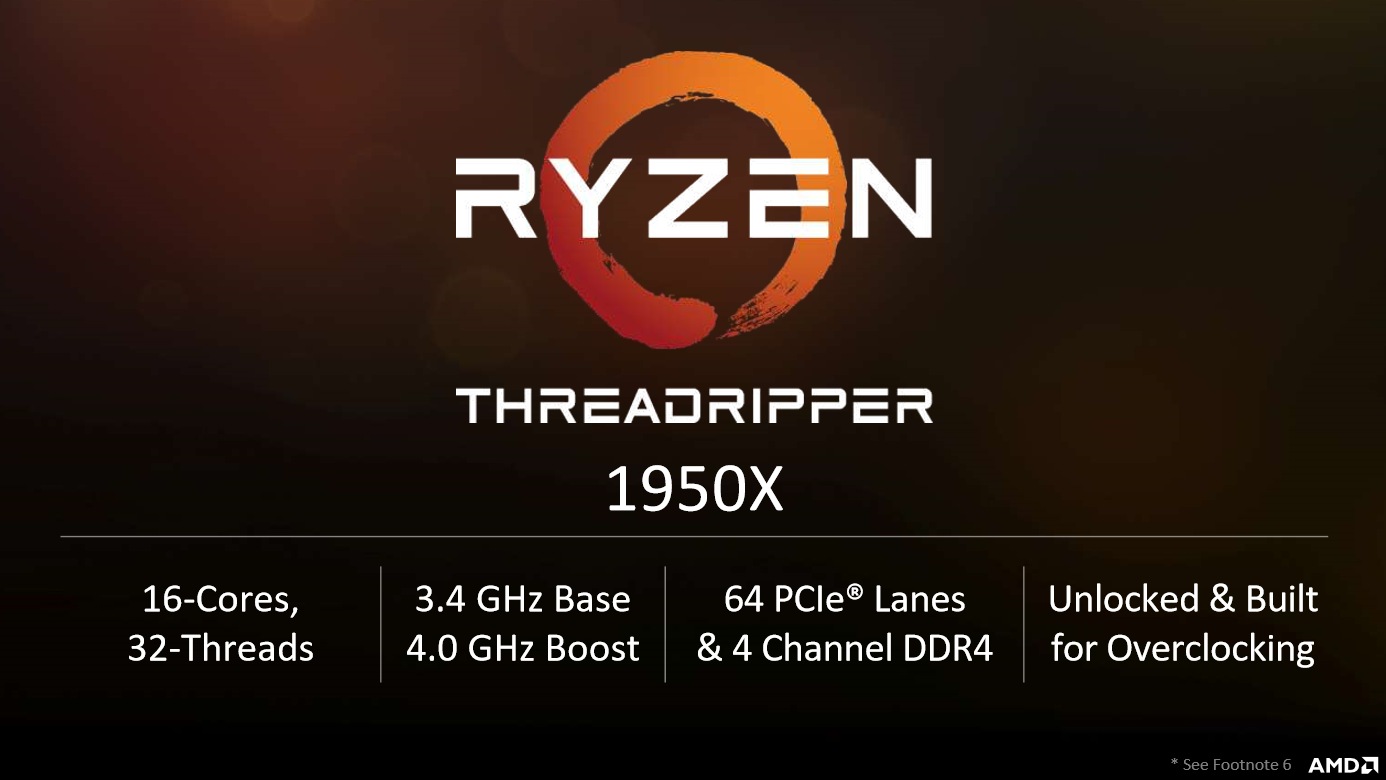

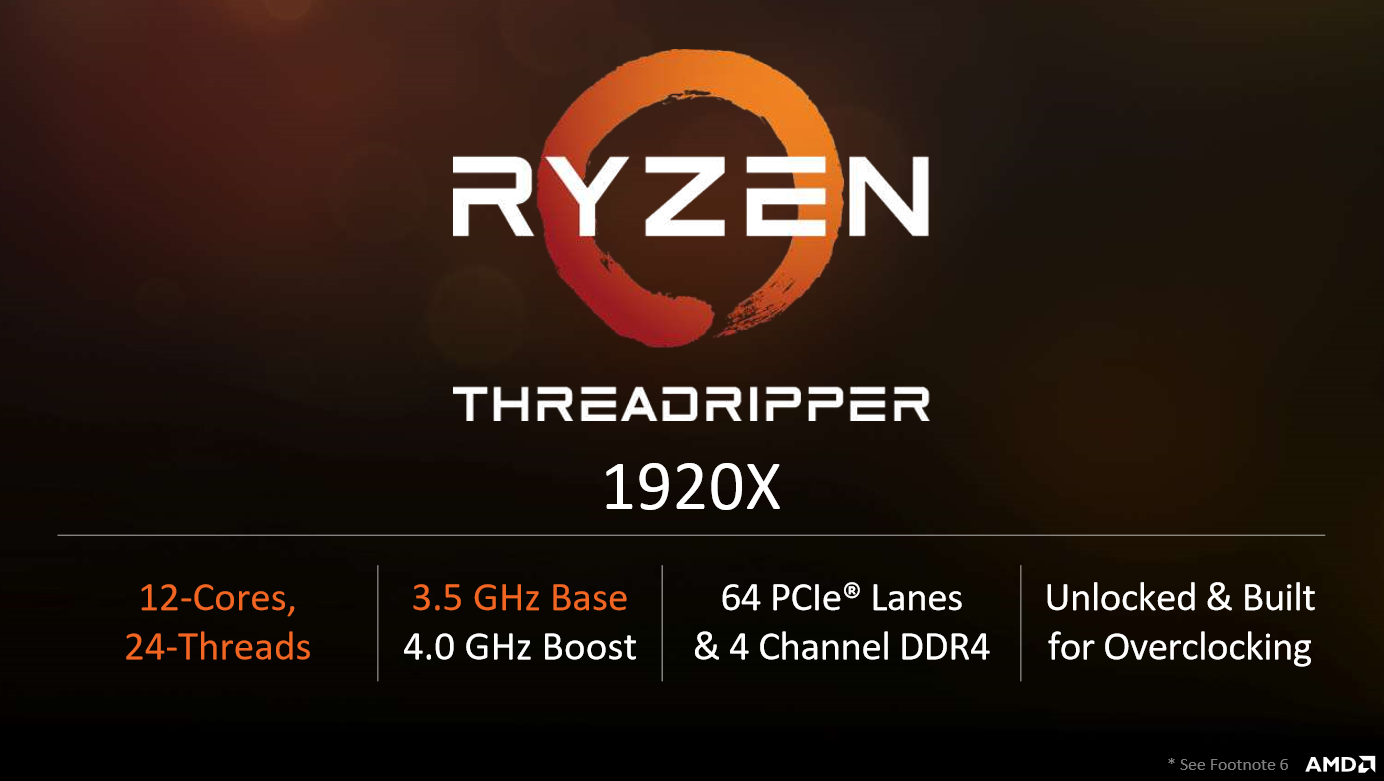

The $999 16C/32T Threadripper 1950X is disruptive, but AMD also offers two competitive downstream models. The $799 1920X wields 12C/24T with a slightly higher base clock, and due to the basic rules of semiconductor power and thermal scaling, the $549 8C/16T 1900X features the highest base clock of the family. AMD already spouted the basic specifications of its two high-end models, but the 1900X was somewhat of a surprise announcement.
| Row 0 - Cell 0 | Threadripper 1950X | Core i9-7900X | Threadripper 1920X | Core i7-7820X | Threadripper 1900X |
| Price | $999 | $999 | $799 | $599 | $549 |
| Interface/Chiset | TR4 / X399 | LGA2066 / X299 | TR4 / X399 | LGA2066 / X299 | TR4 / X399 |
| Cores/Threads | 16/32 | 10/20 | 12/24 | 8/16 | 8/16 |
| TDP | 180W | 140W | 180W | 140W | 180W |
| Base Frequency (GHz) | 3.4 | 3.3 | 3.5 | 3.6 | 3.8 |
| Boost Frequency (GHz) | 4.0 (4.2 XFR) | 4.3 / 4.5 (TB 3.0) | 4.0 (4.2 XFR) | 4.3 / 4.5 (TB 3.0) | 4.0 (4.2 XFR) |
| L3 cache (L2+L3) | 40 MB | 23.75 MB | 38 MB | 19MB | 20 MB |
| Memory Support | DDR4-2667 | DDR4-2666 | DDR4-2667 | DDR4-2666 | DDR4-2667 |
| Memory Controller | Quad Channel | Quad Channel | Quad Channel | Quad Channel | Quad Channel |
| Unlocked Multiplier | Yes | Yes | Yes | Yes | Yes |
| PCIe Lanes | 64 | 44 | 64 | 28 | 64 |
The Threadripper 1950X naturally competes with Intel's Core i9-7900X, but it brings more cores, cache, and PCIe lanes to the battle. The Threadripper 1920X straddles the pricing line between the Core i9-7900X and the i7-7820X, which shows that AMD is taking advantage of the big $400 price gap in the Intel lineup. Shrewd move; Intel doesn't have a clear contender at this price point.
Get Tom's Hardware's best news and in-depth reviews, straight to your inbox.
The Threadripper 1900X only undercuts the -7820X by $50, but it arrives at the party with 64 PCIe lanes. As such, it poses a real threat to Intel's Core i7-7820X.
AMD also announced that it offers a 200 MHz XFR boost, which brings the top stock frequencies to 4.2 GHz for all Threadripper processors. That narrows the gap between AMD and Intel's boost frequencies, but AMD also offers higher base frequencies across the stack.
AMD also provided a slide that outlines Threadripper's resource advantages relative to Intel's lineup. Overall, AMD's core, cache, and PCIe advantages are impressive. Although these factors don't always equate to better performance, they surely set a strong foundation. AMD also reminds us that it dedicates four of Threadripper's 64 PCIe lanes to the chipset.
Unleashing The Threads
AMD also treated us to performance comparisons, but as with all vendors, we have to take the claims with a grain of salt. We provide expandable test notes at the bottom of the article.

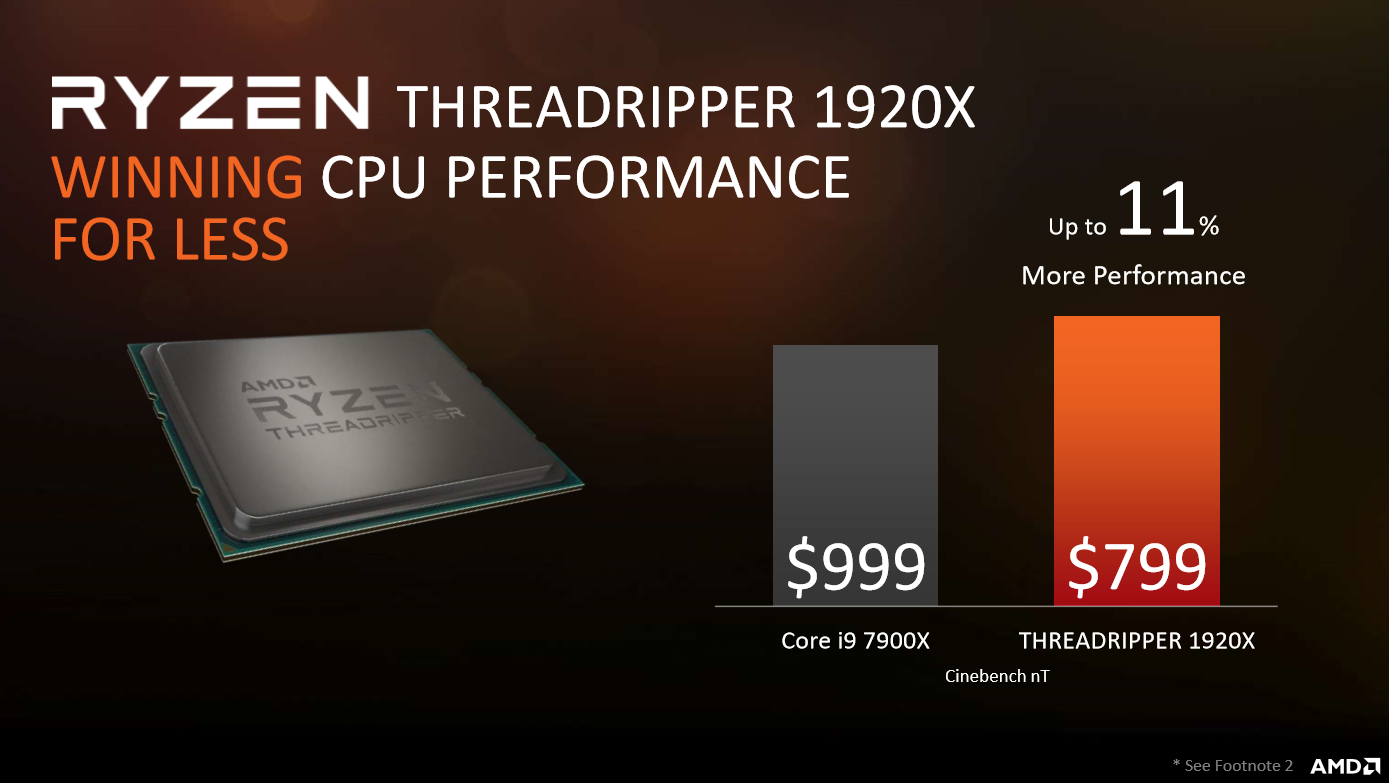
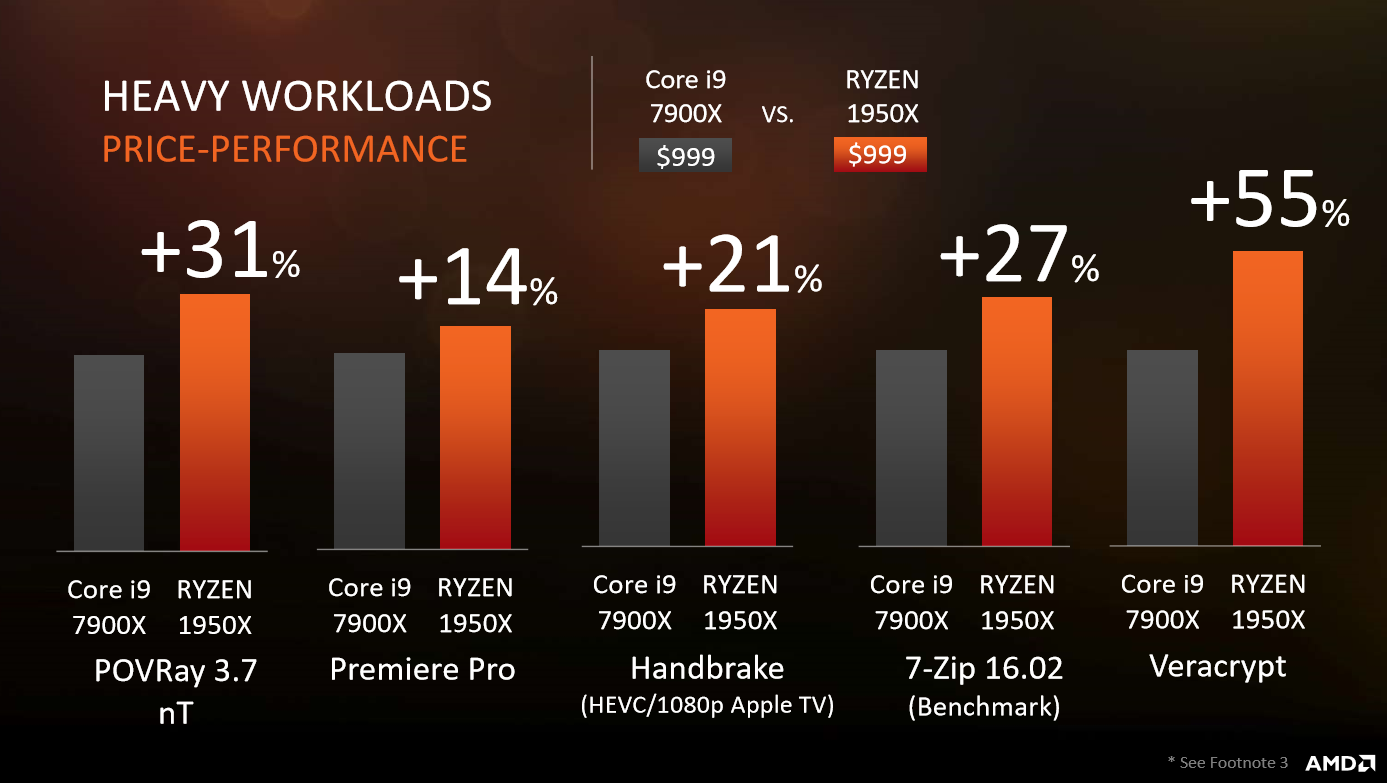

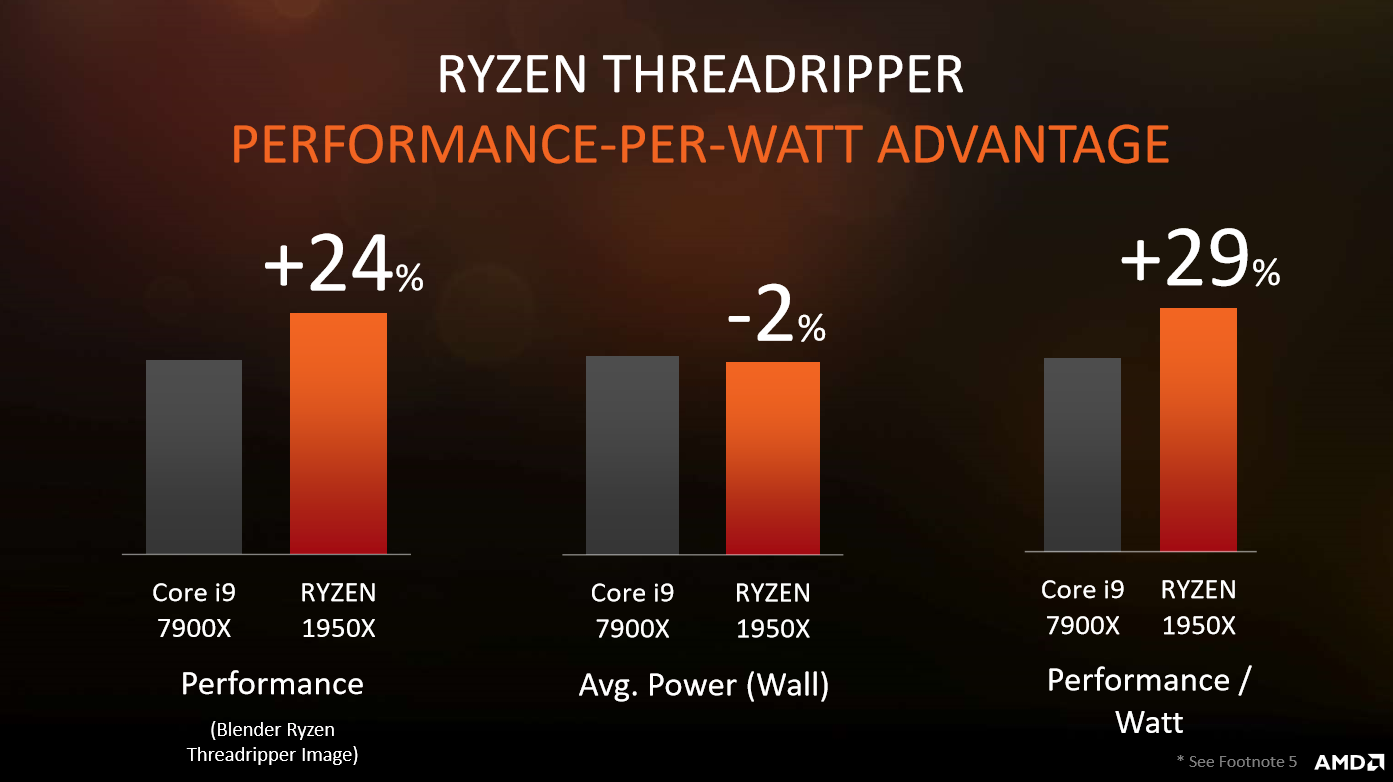
Intel's Skylake-X models have leading IPC throughput and boost clocks, but it isn't enough to hold off AMD's 1950X in multithreaded workloads. The 1950X's 60% core count advantage yields a 39% Cinebench performance advantage. The 1920X, which is 20% cheaper than the -7900X, provides 11% more multithreaded performance. AMD provided performance data from a broader spate of heavy workloads for the 1950X and 1920X, and even the 12-core 1920X can trade blows with Intel's $999 Core i9-7900X, according to AMD's numbers. We will have to wait for more information on the eight-core 1900X.
AMD also claims a performance-per-Watt advantage over comparably-priced Intel models. We learned the Threadripper models all have a 180W TDP, which is 40W more than the Skylake-X lineup, but TDP figures can be misleading. For instance, AMD's EPYC processors have a higher TDP than Intel's Purley models but are surprisingly efficient. Those processors are very similar to Threadripper.
AMD contends that its 16-core 1950X offers considerably more efficiency than Intel's 10-core -7900X, but it will also be interesting to pit it against one of Intel's higher core count models. Those have yet to come to market, lending AMD the advantage of the highest core counts at launch.
The Launch Ecosystem And Tool Kit
AMD is eager to avoid some of the hiccups of the Ryzen 7 launch, which suffered from limited motherboard and cooling options. To that end, AMD has lined up launch-ready motherboards from ASRock, Gigabyte, Asus, and MSI.


A menu of 20 different liquid cooling options and five air coolers from a wide array of manufacturers also greet early adopters. AMD includes a bundled Asetek adapter for existing AIO watercoolers. Considering Asetek's role in the AIO ecosystem, the bracket will grant wide compatibility with existing closed loop coolers.
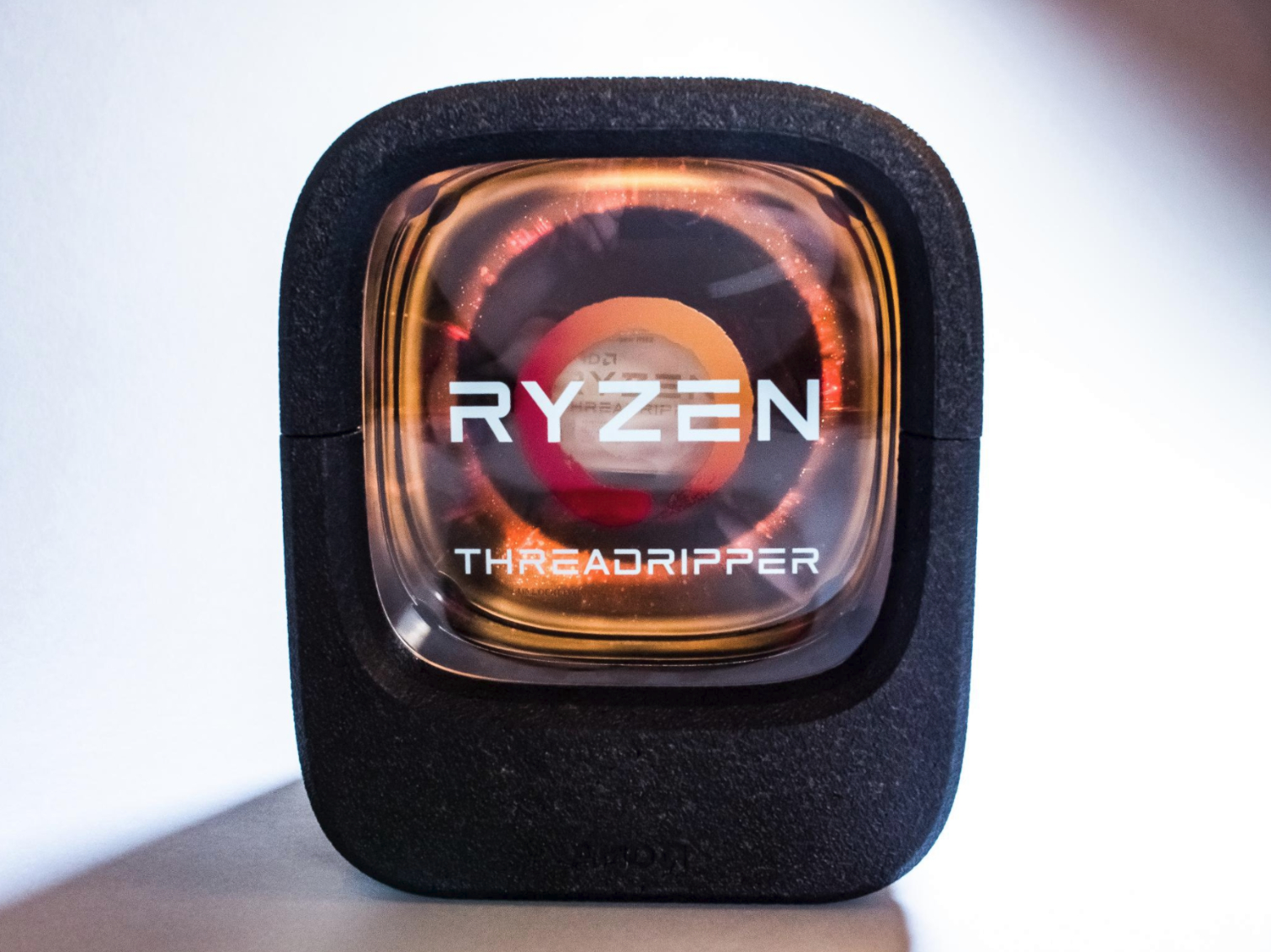

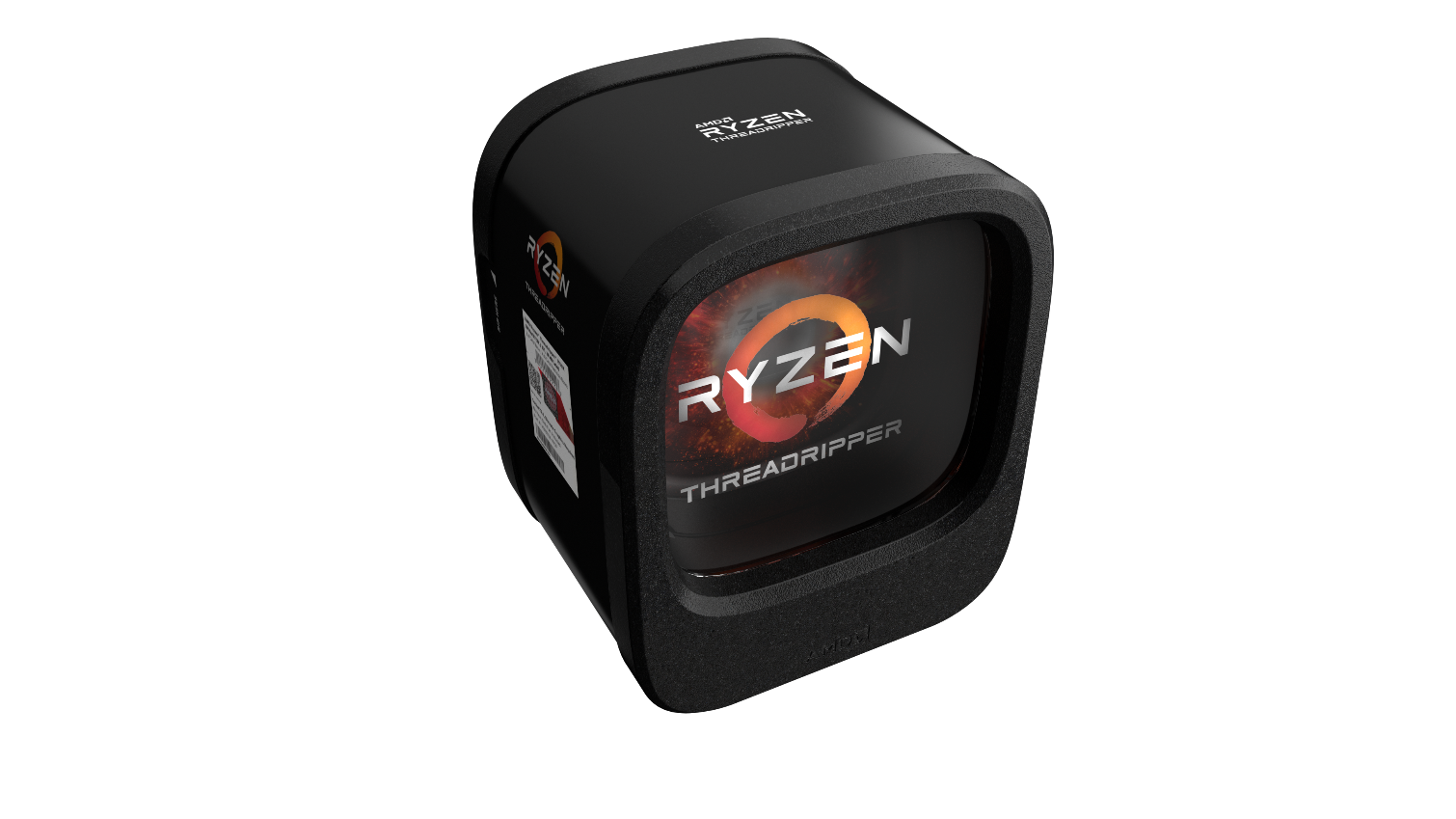
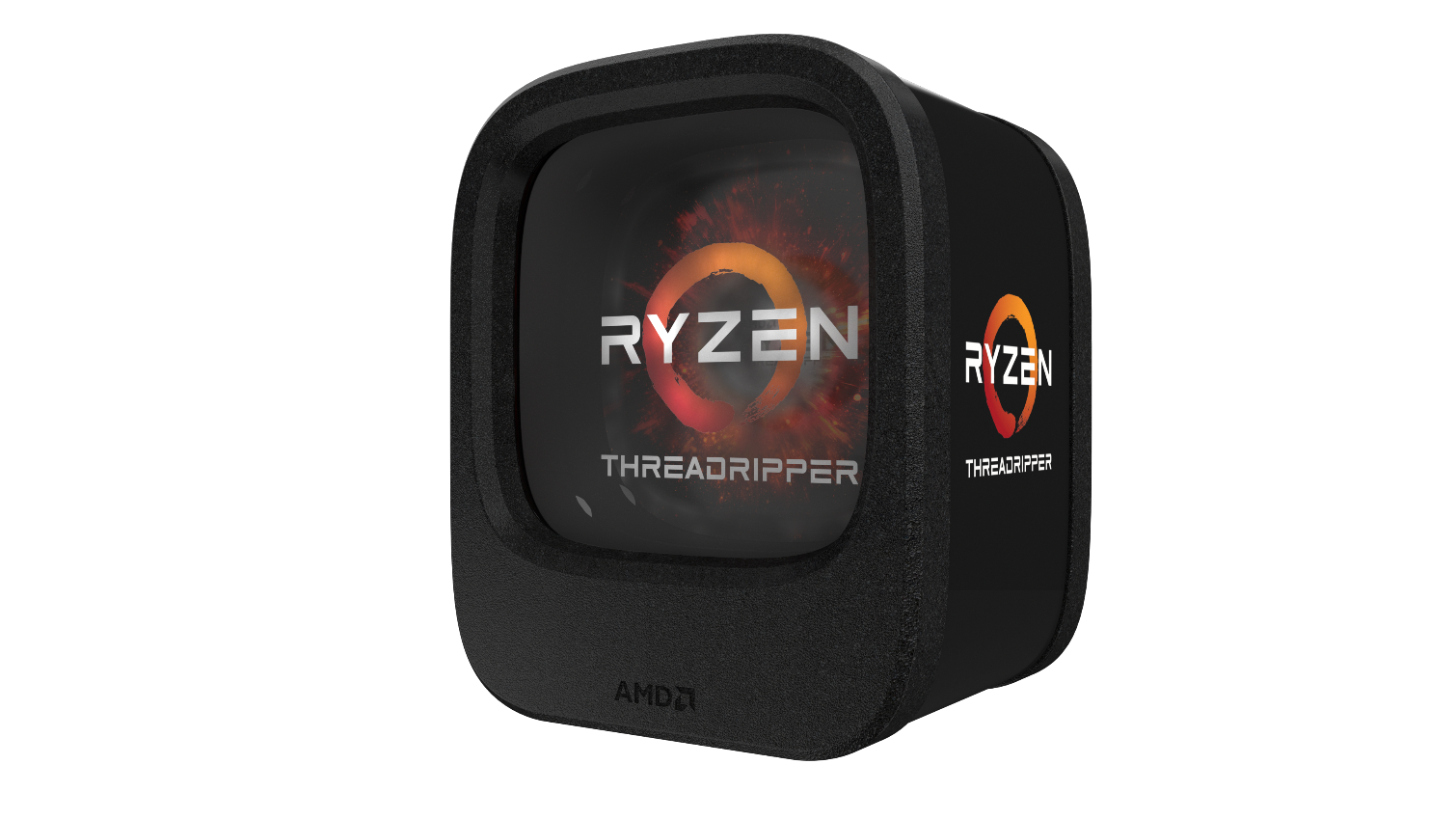
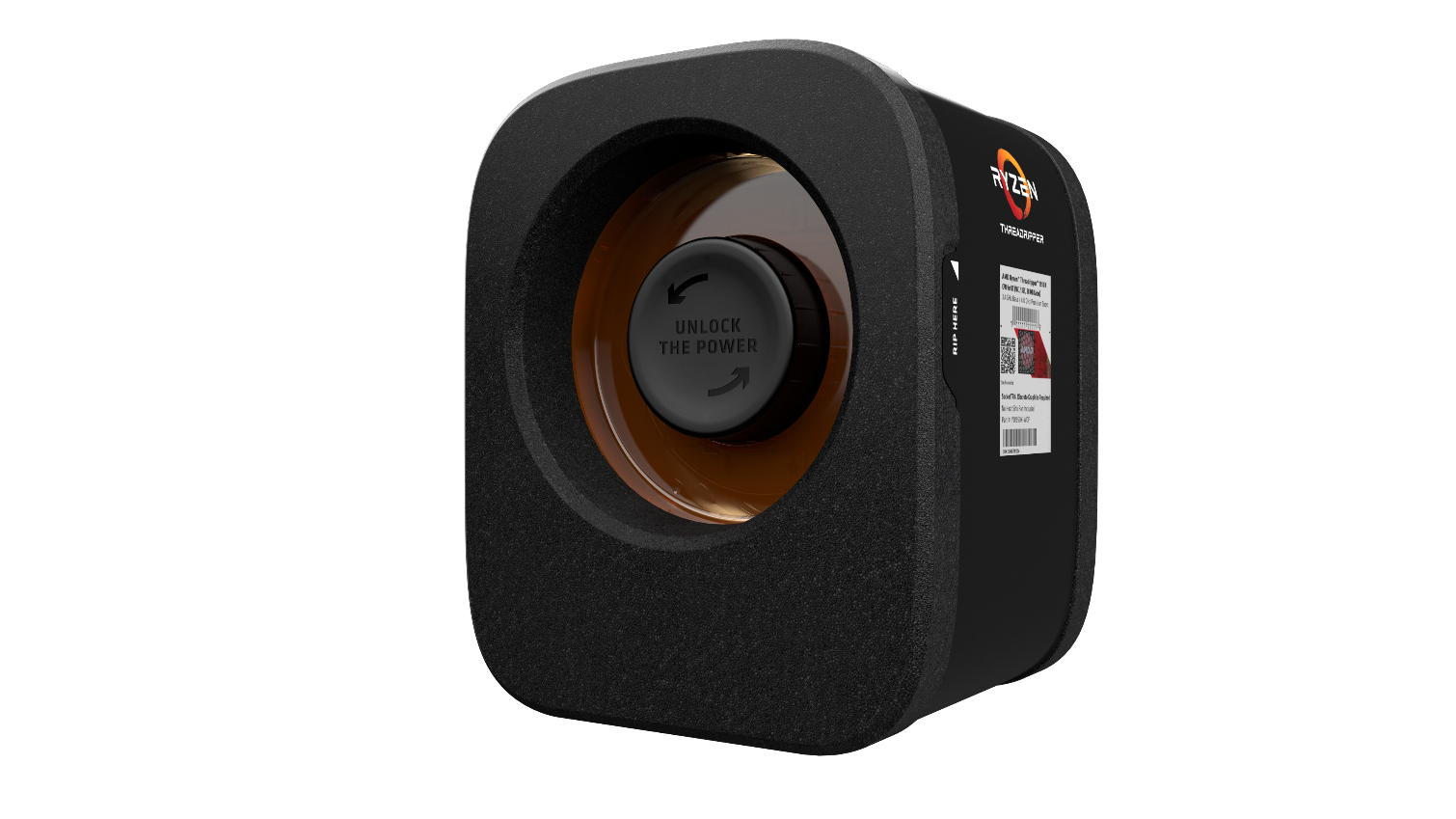
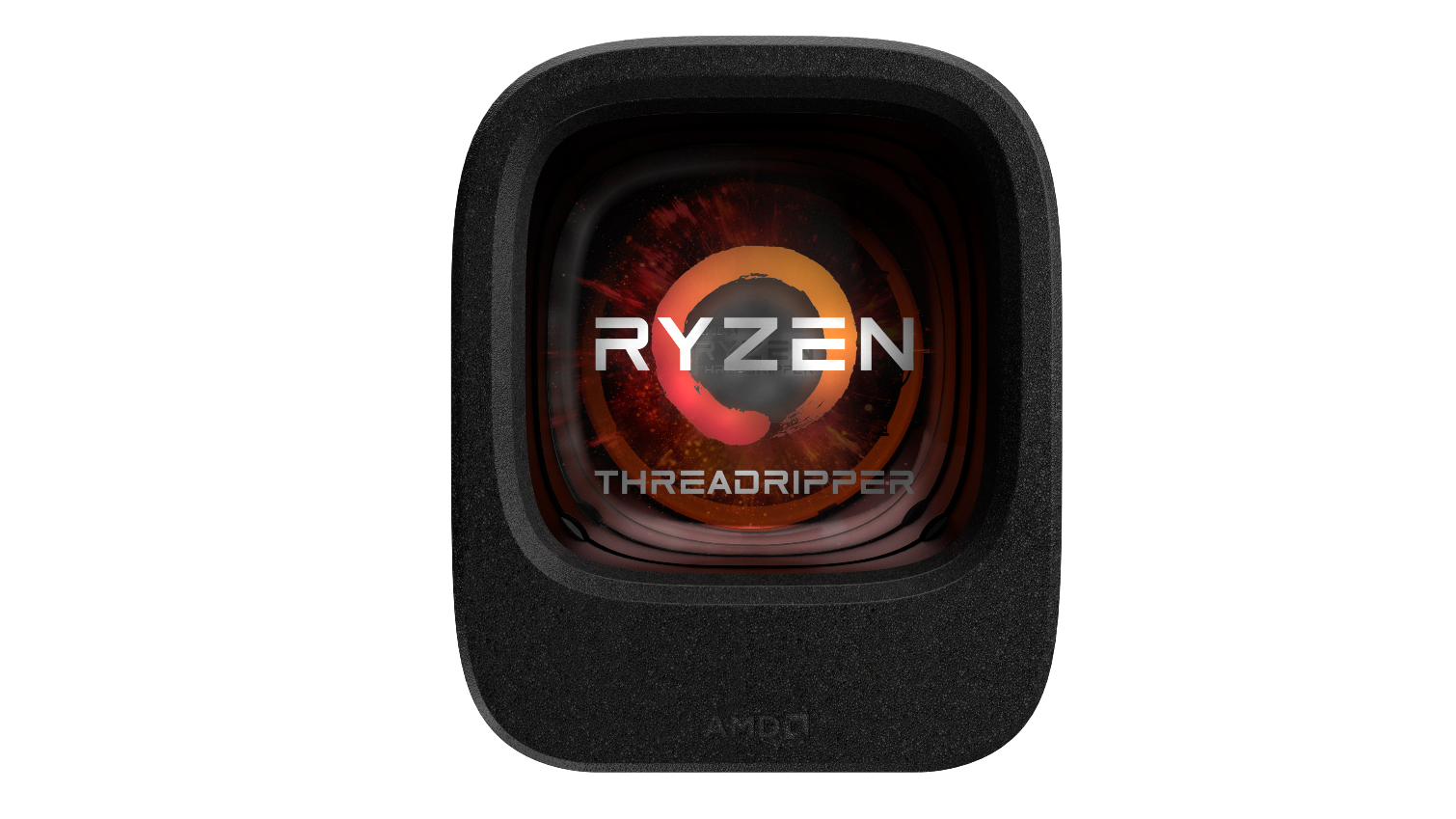
Threadripper's large retail package provides plenty of room for value-adds. Given the large Threadripper processors and TR4 socket, it will likely require a fair amount of pressure to ensure consistent contact between the chip and the socket, so the company employs three Torx fasteners to hold the processor snugly. AMD provides a bundled Torx wrench for processor installation. We've covered the socket dimensions and installation procedure, so head to those articles for more detail.
Pre-orders and Availability
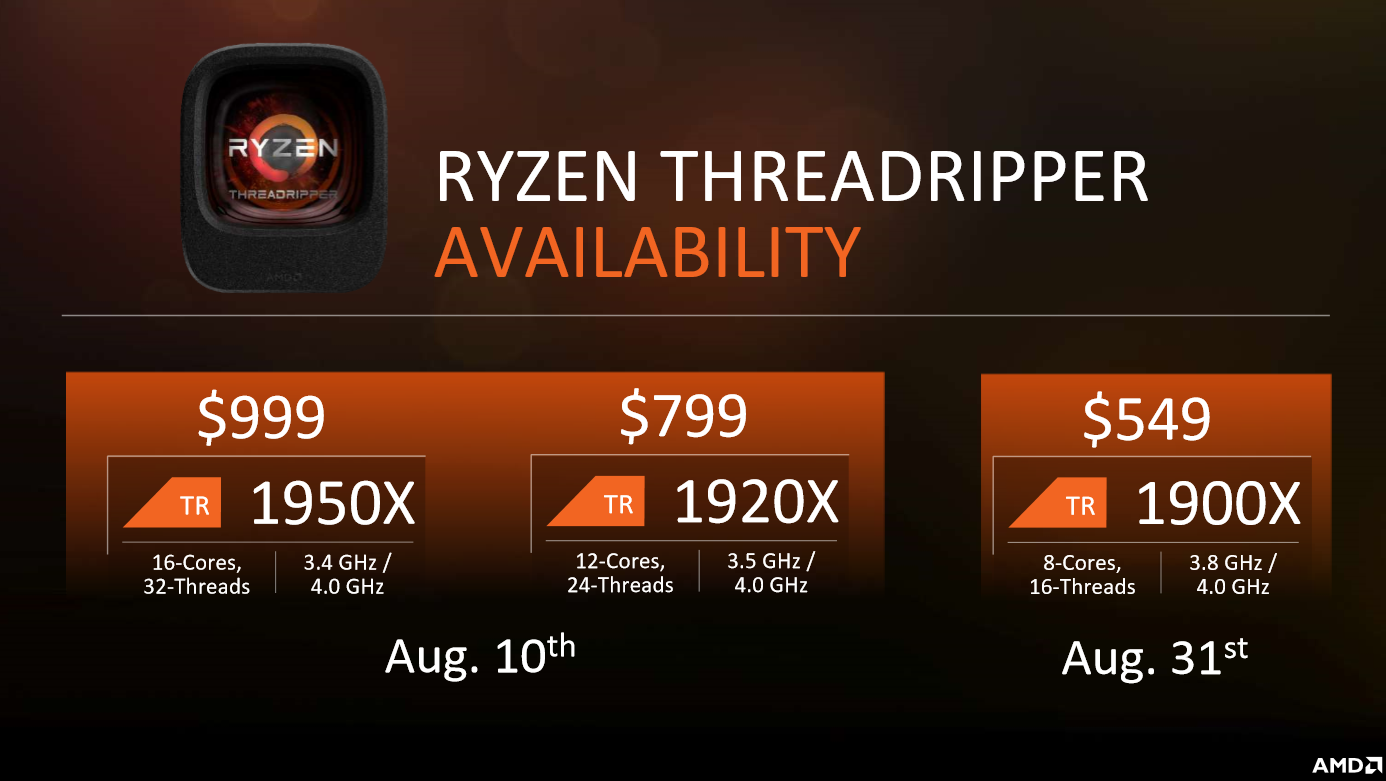

AMD is opening a pre-order window for the Threadripper 1950X and 1920X models on July 31, but as usual, we recommend waiting for in-depth reviews before pulling the trigger. For those who can't wait, Amazon, Newegg, and a host of other retailers will have the processors. A slew of boutique builders already offer pre-orders for full systems. The 1950X and 1920X ship on August 10, and the eight-core Ryzen Threadripper 1900X will land on August 31.
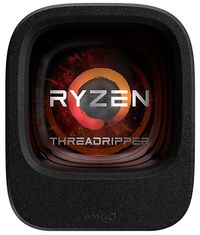
The Intel Reaction
AMD feels that Intel has already begun to lower its prices in the face of stiffer competition, and as we can see in the chart, Intel has significantly reduced its pricing for high-end desktop models. If AMD generates enough sales, it's possible we could see further changes to Intel's pricing model.

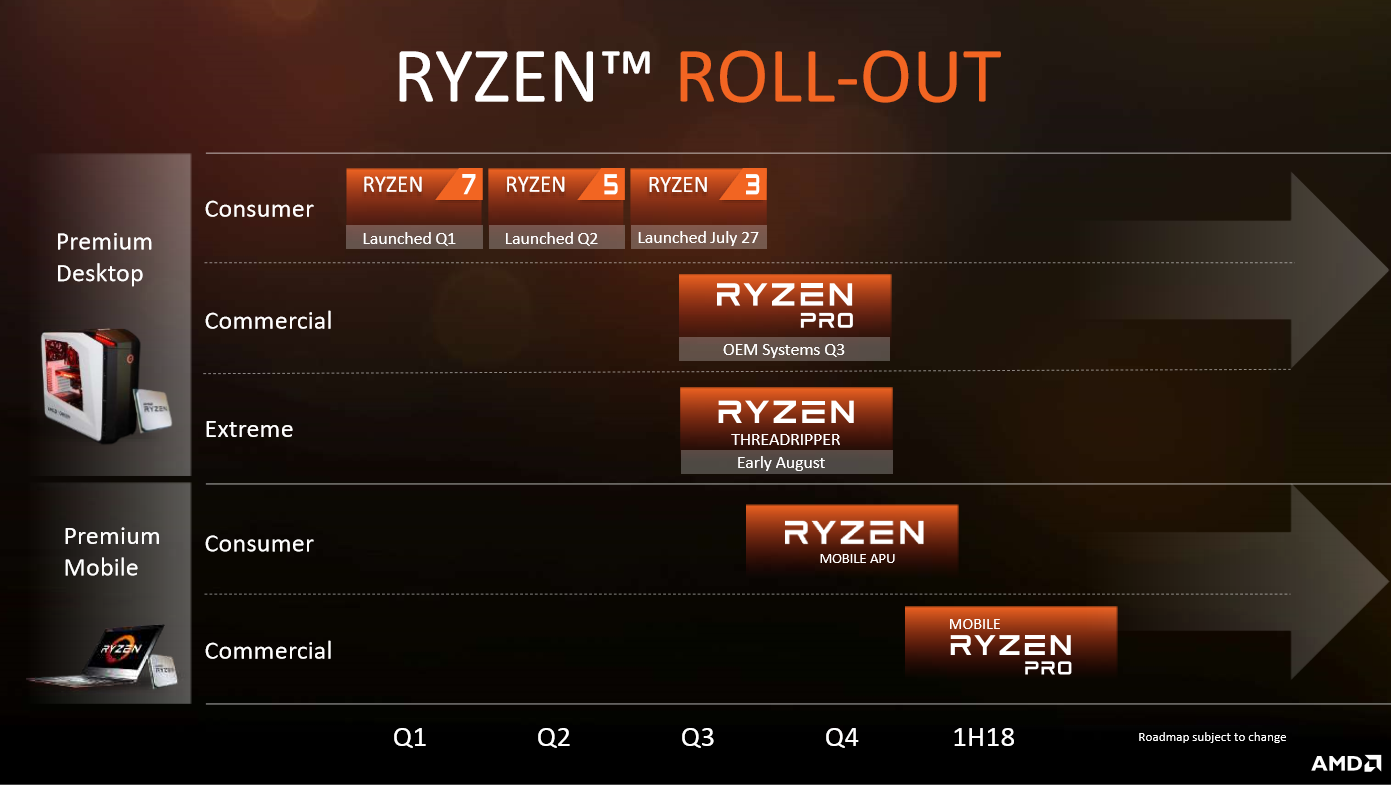
It's definitely been an exciting (and exhausting) year of processor releases so far, but the story isn't over. AMD also has the Ryzen Mobile and Raven Ridge APUs, which feature Zen and Vega cores on the same die, headed to market later this year. That puts a cap on AMD's penetration into every market segment. AMD has built its way up the stack to Threadripper, and you can imagine reviews will be ready when the processors hit shelves.

Paul Alcorn is the Editor-in-Chief for Tom's Hardware US. He also writes news and reviews on CPUs, storage, and enterprise hardware.
-
Steve_245 Seems clear to me they're setting up the x399 for dual socket enthusiast boards. That would be a fun system to play with.Reply -
Lucky_SLS Quad channel with 8 core for 550 bucks? That's a great move. The 1900X is a great cpu for homebrew content developers.Reply -
TechyInAZ Wow 4.2ghz XFR. How did AMD pull that off? There are only like 5 Ryzen CPUs in the world that can do 4.2ghz without overheating on regular cooling.Reply -
InvalidError Reply
Dual ThreadRipper doesn't make much sense as that would be about on par with a single socket EPYC and likely cost more. Also, since AMD designed EPYC to only be capable of dual-socket and decided to use a slightly different socket for TR, I'm guessing that pins that were dedicated to supporting multi-socket and extra IO on EPYC got re-purposed for something else on TR, such as extra power and ground pins to help support higher clock frequencies.20002888 said:Seems clear to me they're setting up the x399 for dual socket enthusiast boards. That would be a fun system to play with. -
InvalidError Reply
One word: binning.20003050 said:Wow 4.2ghz XFR. How did AMD pull that off? There are only like 5 Ryzen CPUs in the world that can do 4.2ghz without overheating on regular cooling.
AMD likely set aside the very highest-clocking dies under 90W a piece for TR, which is why so few R3/5/7 manage to get beyond 4GHz on air cooling and reasonable TDP.
-
Lucky_SLS ^ could it also be due to the large surface area to cool that tr2 socket and hence more thermal headroom?Reply -
Olle P Reply
Overheating while speeding up a single core? Really?20003050 said:Wow 4.2ghz XFR. How did AMD pull that off? There are only like 5 Ryzen CPUs in the world that can do 4.2ghz without overheating on regular cooling.
-
msroadkill612 For 100usd more~ than the top ryzen. enthusiasts who may also game, can get a real computer (albeit a "mere" 8 core) like the big budget guys.Reply
Combined with a sibling vega gpu, quad channel ram, plenty of lanes & nvme ports... - its a very powerful foundation for serious work and play.


